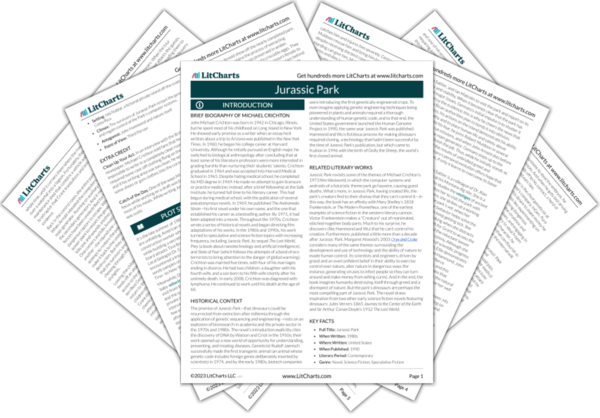Grant’s conversation with Tim allows the book to introduce the raptors as a species to readers. Since they represent nature’s ability to evade human control, their speed, intelligence, and pack instincts pose a particularly dire threat to humanity. The technology used to recreate them is undoubtedly impressive. But the motivations of its operators, for good or ill, determines the outcomes of its use. And their poor decision to keep lethal animals in the park reveals their arrogant assumption of human domination over nature. Unlike the park operators, who want to make the dinosaurs conform to their expectations, Grant allows his observations of the living animals to increase and update his knowledge—and predictions—about the species.


